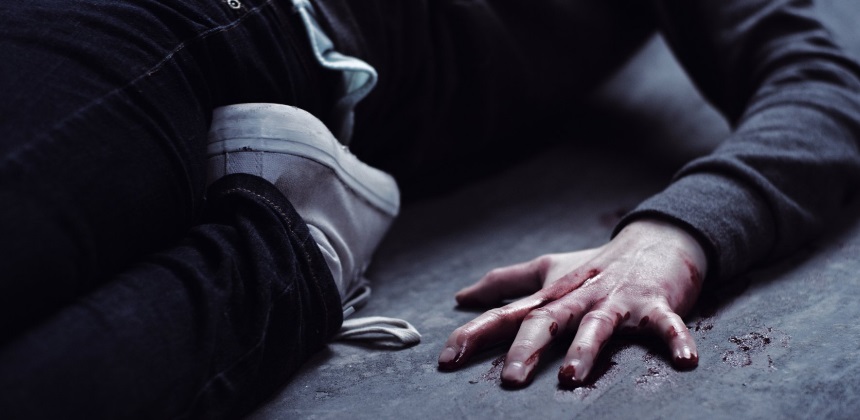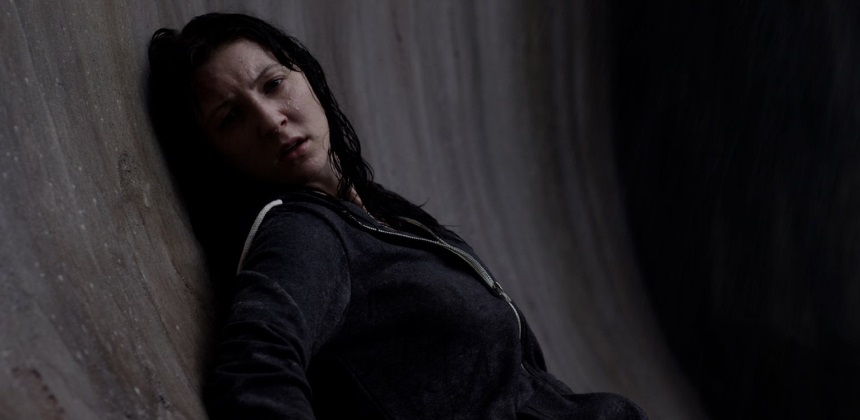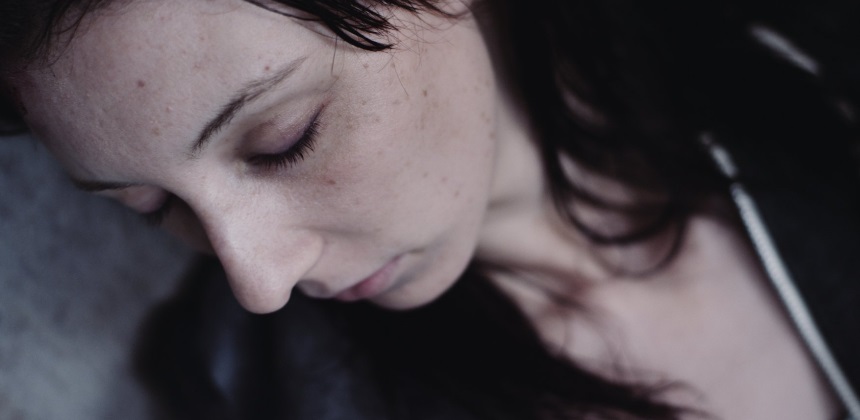Interview: Tim Egan Discusses the Inspirations and Craft of CURVE

If there is one short film that can speak for itself, evincing its obvious talents through nothing but images, it’s Curve. Even so, we couldn’t pass up on the opportunity of interviewing its diabolical creator, writer-director Tim Egan.
While he was visiting the Transylvania International Film Festival we got together over Skype and dove into the dark depths of Curve.
(Attention all genre fans: if you still haven’t seen Curve yet, do so now! It’s easy, just click here.)
ScreenAnarchy: You have to tell me Tim, what’s the secret to Australia and excellent genre cinema? You’ve got Greg McLean, Sean Byrne, Jennifer Kent, Ben Young, Damian Power, and that’s just the tip of the iceberg. There is so much talent coming from Australia these past couple of years.
Tim Egan: Yeah! I don’t know. I honestly don’t have a clear answer, but it’s wonderful to see. I remember just a few years ago, the first time I saw Jennifer’s Kent The Babadook, and it was just phenomenal filmmaking; a wonderful sort of .. I don’t know if pure is the right word but, genre filmmaking has always been really strong in Australia. It goes through periods of trying to mimic the U.S. or trying to provide, like, B-movies to the U.S., it obviously went through the Ozploitation phase. We have had a strong personal voice in Australia and I think maybe we’re getting that back.
I imagine you have really good film schools and institutions that nurture talent?
We do, yes! We always have. And you get sort of trends or fashions going through those schools. Obviously you’ve got the teachers but also the students themselves; strong personalities coming through that can really shape a whole batch of filmmakers. One starts to go in a genre direction and that inspires someone else. The schools have always been of a high quality and tend to put out great craftsmen. But when you get a wave of something, it’s hard to pinpoint where exactly that started. A lot of the time I think it’s filmmakers inspiring each other. I think at the moment we’re seeing a couple of great genre films, just worldwide really. There’s a newfound maturity with genre; not that I don’t love wonderfully immature genre as well [Laughs.] It’s just great to see the overall love.
Roughly 14 months after its Tribeca world premiere CURVE is still making the rounds at festivals. It seems to have played almost every country in the world and praise has been sort of unanimous. Have you gotten used to the widespread critical acclaim?
When you make the film, you absolutely don’t know. […] When the idea comes to you, the reason why you decide to spend all this time making the film is ‘Yeah, I’d be interested in seeing that’. After that, you have no idea whether you’re making a good or a bad film. You just put everything you can into it and we crafted Curve as well as we could. We had great people doing the designs of the set and sound.
But when you get to the end of the day and finish it … I remember the first screening I had with just a couple of friends and my family and if anyone’s gonna give you a positive response, that’s a pretty safe group. And I was still terrified; I had no idea what anyone was going to think. I wasn’t sure if it was going to be liked, even by my closest friends. Then there was a moment when Tribeca called, that was the first person who wasn’t related to me or a close personal friend and said ‘I saw it and I loved it’. That was a moment where I thought ‘maybe it’s ok’ [Laughs.]
I think it did so well, universally, because Curve deals with very universal fears and, being wordless, it translates very easily. But no, you never get used to it and it’s amazing but when someone comes up to you even once and says ‘Hey man, I didn’t really like it’, you go ‘Yeah, I know, it’s terrible’ … you instantly believe that guy rather than other people.

The concept of CURVE is elegantly simple: there’s a young woman in danger, a sloping surface and an unseen threat at the bottom of an abyss. You tap into various fears at once that, as you mentioned, feel universal: Fear of the unknown, fear of falling, fear of heights, even fear of open spaces. What possessed you to come up with such an utterly terrifying situation and what prompted the basic set-up of CURVE?
Well, you don’t know at the time. The idea just occurs to you … You have to sort of look backwards and figure out what was in your own head that sort of kicked the idea out.
I was in a car accident several years ago. A car ran though a red light when I was crossing the street; it came out of nowhere, I barely saw it. The next few seconds I rolled in front of the car, into the middle of traffic … All of those emotions, the split second where I realized I’d gone from ‘my life is in danger, I must do something to try and save myself’, to sort of a serious physical impact to being thrown into the middle of the road and knowing that if there’s another car in the next lane it’s gonna be [BAM] … I could open my eyes and it could be there [that found its way into Curve].
I remember very clearly sort of putting my hands down, trying to grab onto the ground, like having a good grip would save me somehow against cars smashing into me. I certainly didn’t think of any of that while I was writing the script but you can see all those little moments pop up in Curve.
The other thing that inspired Curve are discussions I’ve had with various people dealing with strong psychological problems and serious depression. A person once told me a story that the best part of her day were the two or three seconds after she woke because her brain had forgotten it was depressed. And I’m not an expert in depression or anxiety but that was how it manifested for her. I just remember the sort of ‘dropping of the stomach’-feel when she told me that; to be reminded of all these horrible things. And she sort of felt like the world opens up beneath you and you spend the rest of the day just trying to hold on.
When you look back that sort of has to be the DNA where it came from.
What I love about CURVE is that it’s immediately engaging on a visceral level as a very stylishly told story about a woman desperately trying to hold on for dear life, attempting to survive even though the odd seem entirely against her, but it also works as a metaphor for psychological distress. Is this the type of genre film you admire most? Fantastical works that can operate on multiple levels?
Absolutely. That’s also something I’m always looking at in other films: the foundations and the levels at which you have to build a story. For me there’s nothing more important than the base level, the core things that human beings need: the survival instinct as it were. And if your film doesn’t work on that basic level – simple, strong base emotions – it doesn’t matter how many metaphors you put on top; the structure’s gonna fall over. So, for me the most important thing was getting her situation and panic right. If someone came and said to me ‘I didn’t get anything from your film but I found the situation very intense and wanted her to survive’, that’s enough for me. If you can find other things that are added on: great! […] But it has to work on that emotional level first.
I find the lack of context a very bold choice on your part and a unique manner of engaging the audience, who can’t help but wonder: Who is this person? Where is she? Who dropped her on that curved surface and what on earth did she do to deserve this punishment?
Absolutely, yes.
Was a less-is-more approach what you were aiming for from the get-go?
Yeah, and that’s something a few people have brought up actually. They wanted to know why she was there and it left them a bit cold that I didn’t tell them. I can totally understand that. For me, certainly the stories that I like to write, if you give an audience any more than the barest that they need you’ve painted it too much on the canvas. I like it when you give someone three things and it totally lets them fill in the blanks; they can take the film where they want to take it.
I was going to give a few other affectations to Laura’s wardrobe but I ended up just keeping it as simple as possible. She was just any person; Laura created an internal character of her own but we wanted it to feel as if this could have happened to anybody. I thought for a second that she might have a dog leash, as if she’d been out walking the dog and somehow ended up here. But I took that out because I figured everyone was gonna spend the whole time thinking ‘what happened to the poor dog’? You don’t want to muddy the story with that [Laughs.]
I just wanted to give people a few simple, powerful things and they take it wherever they like. And I love hearing people’s stories about how they think she did survive. Where they think the story went next. And people’s stories about why they think she’s there. As a creator of anything, to have someone take your piece, adding to it and expanding it, that’s fantastic. So yeah, always ‘less is more’!

You already brought up Laura Jane Turner and we have to talk about her formidable performance. How did you discover her and how did you prepare her for this role? It must have been a challenging shoot.
Oh yeah, it was tough on her. I explained it would be a difficult and physically uncomfortable role to play. It was a warm summer in Melbourne, we had to sprinkle her with rain, she had to fold her legs under her, slide around … Really give a performance where you are in physical distress. But she was a total professional.
I reached out to every actor and director I knew in Melbourne and said ‘Is there anyone you think would be appropriate?’ We did an open call, we looked at a lot of reels and it was really about who could give that sort of performance. Originally I thought I wanted the role to be a bit older, to make it even less likely she’d survive, I suppose, but the big thing that the actress needed to be able to do was to tell the story and the character completely without the use of any words; and explain what she was doing, how she was gonna climb the wall, what she was planning. It all needed to be there in her eyes.
She needed to convince us that she was in mortal danger. The last thing was the moment when the rain does fall, that she could still be heartbroken but resilient. That’s my favorite part of the film, when she sort of decides to keep pushing. In the end Laura was recommended by an actor friend of mine and she was able to convince us of all that in our casting room, basically my lounge room, on a couch. If you can do it there, I figured you should be fine when we get you up on a stone wall. And she did. She carries the film.
The shot sequence or really the visual rhythm of CURVE makes it impossible for audiences to turn away and really makes this a 9-minute edge-of-your-seat nightmare. Was it difficult to edit your short and did you storyboard things ahead of the shoot or did you figure out the sequence in post-production?
I shot the film entirely using a piece of polystyrene that a friend of mine had shaped, a small doll and my phone. So the whole film was storyboarded, every shot, every angle. We were quite specific and the final edit is pretty close to that original sequence. We did go back for some reshoots, which is hard when you destroyed the set [Laughs.] but we definitely were well-prepared.
Editing is always difficult because you know the story very well so you quickly get bored with it. And then you wanna put in everything because you know how much good stuff you’ve got. The edit tends to waver from 7 to 12 minutes, back and forth a couple of times. Sometimes when I watch it now, it’s too slow, sometimes I feel it’s just right. You never stop working on these things but most of it is on the page in the storyboard, and not much was left to chance in post-production.
What we did really work at in post was some of the CG additions, like the other side of the wall and the expanse, which was designed by a company in Melbourne (FloodSlicer) that donated their services. We went through a few ideas. I thought that perhaps there might be another giant drain out there or something but they came back and said ‘look, it should just be sort of a repetition of this shape over and over again’. And as a friend of mine quite aptly pointed out, that made it feel like an abattoir to him; like this is going on everywhere.
This film was always gonna be very heavily driven by sound; that’s another thing we worked on in post. We did a lot of extra recordings. We went to underground environments, in some drains around Victoria, and a lot of intense scratching … all that stuff. Then finally the sound designer Craig Jansson did a magnificent job in that he created the sound that came up from the pit. That was the one thing we had totally left to post. We tried hundreds of things in that spot and nothing was right. It needed to be either a machine or an animal with some kind of intelligence, and that’s very angry. And he came back with that; when he played that, we were like ‘all right, the film is done’ [Laughs.]
What can we expect from you in the future? Anything you can share with us at this point?
I’m looking at a few different things that I’m considering to do next. I don’t get many ideas, to be honest, that I want to spend years working on. And you have to be willing to spend years on a film. So you really want something that just totally consumes you. One thing I really like is the possibility of ‘shorter’ long form. I get a lot of ideas for hour-long works; there aren’t that many that I want to go into the full ninety minutes for.
And there are a few short film ideas as well. There’s a feature that I’m writing at the moment that isn’t based on the story of Curve but could well be in that universe. I’d like to think that in this feature at some point they could easily meet Laura’s character. It could theoretically be an extended world. It’s unusual and it’s also with a singular person focus; using very human tools this person tries to solve a supernatural problem, which is something I really like.







